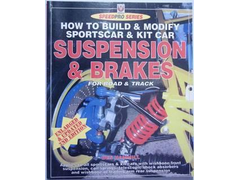
indy ride height
john_p_b - 2/8/06 at 09:21 PM
never actually done anything in the slightest technical with the suspension on my indy apart from make it high enough to get over the drain in the
drive!
just wondering what others have the ride height set at? at the moment mine is set at 4" front and 6" rear. the chassis clears most things
but i find the bellhousing catches from time to time on speed bumps etc (don't think there's 3" between tarmac and bellhousing!)
so any recomendations for a indy with a boat anchor then let them be known here 
RichardK - 2/8/06 at 09:30 PM
Just getting round to putting the back suspension on hopefully this weekend and I've been dead worried about this as the bloody council have just
put speedhumps all round the estate where I live (except outside the primary school, figure that one out) since I started my build, don't know if
I will ever get it off the estate  should be fun going up and down my street! Is 3" enough from the bottom of the bell housing to the deck to
clear normal humps? If it is I should be ok, if you could let me know what other people have and if they can clear humps would certainly put my mind
at rest.
should be fun going up and down my street! Is 3" enough from the bottom of the bell housing to the deck to
clear normal humps? If it is I should be ok, if you could let me know what other people have and if they can clear humps would certainly put my mind
at rest.
Sorry John for the slight thread hijack!
Cheers
Rich
Chippy - 2/8/06 at 10:41 PM
The statutory height for speed bumps is 3", although have seen some on private estates that are higher. I have set mine with 4" under the
bellhousing, and so far no prob's. Mind you my car has 6" clearance on the chassis, but I did design it to be that high, as I wanted the V6
to be as low as possable in the body. Regards Ray.
roadrunner - 3/8/06 at 09:09 AM
It depends what your damper stroke is , on my indy i have gaz shocks with 9" compressed and 13" fully extended , so for the right ride
hieght when your indy is sat on the ground your shocks should measure 11"from top to bottom , to give an eqaul stroke up and down.
Origanally i had mine set at 12.5" to give greater road clerance but this meant it was really twichy on bumpy roads , and a bit nearvy on big
corners .
Hope this helps.
nick205 - 3/8/06 at 10:39 AM
John,
My understanding is that for the type of suspension design used on the Indy you should be aiming to get the front and rear lower wishbone pivot points
- i.e. centreline of the wishbone pivot bolts and/or centreline of ball joints - an equal distance from the ground. Think of an imaginary line
between the inner and outer pivot point centrelines and this line should be parallel to the ground. In this way the effects of the suspension's
bump and droop are minimised.
Damper settings, tyre pressures and corner weights all need to be considered to get the best out of the suspension too.
If you wnat to get deeper into it (and it gets quite deep) have a look for this book which covers suspension set-up very well IMO.
"How to build and modify suspension and brakes" by Des Hammill
Published by Veloce - ISBN 1903706734
[Edited on 3/8/06 by nick205]


Rescued attachment book2.jpg
john_p_b - 4/8/06 at 08:13 PM
had a quick look while i was changing the diff tonight, the front suspension is needs raising a bit going on what nick has said above.
the pivots on the chassis are currently sitting lower than the ball joint (put simply of course!)
if i can find a decent amount of reliability then corner weighting is something i might look into in the future but for the time being i just want it
far enough of the deck to be useable but not so high it effects handling.


 should be fun going up and down my street! Is 3" enough from the bottom of the bell housing to the deck to
clear normal humps? If it is I should be ok, if you could let me know what other people have and if they can clear humps would certainly put my mind
at rest.
should be fun going up and down my street! Is 3" enough from the bottom of the bell housing to the deck to
clear normal humps? If it is I should be ok, if you could let me know what other people have and if they can clear humps would certainly put my mind
at rest. 

